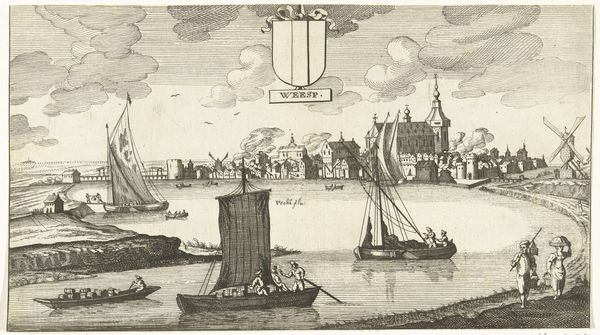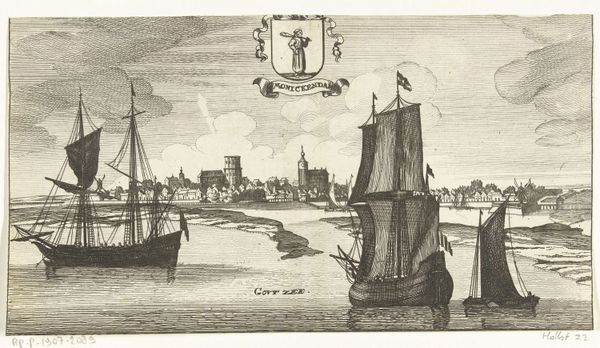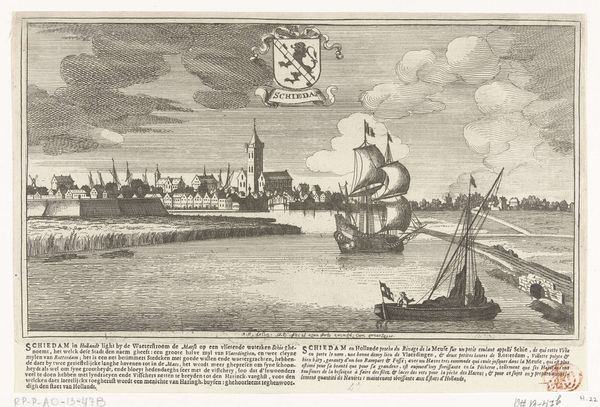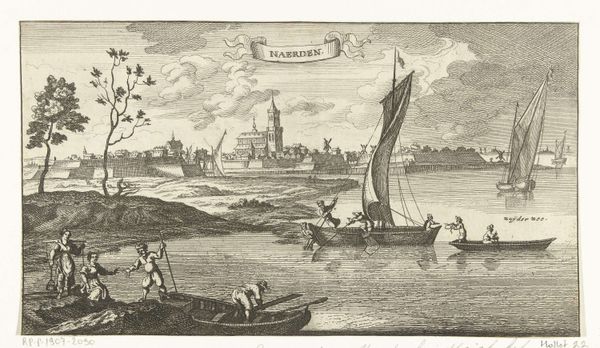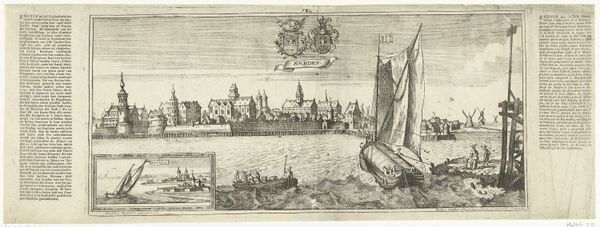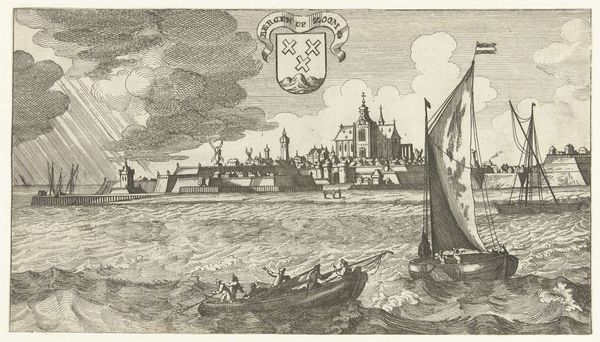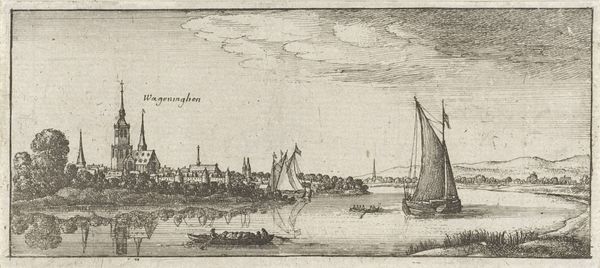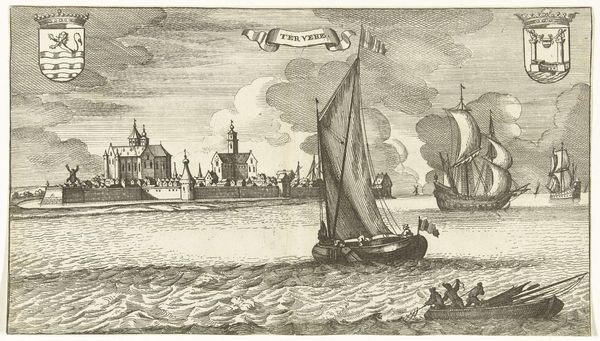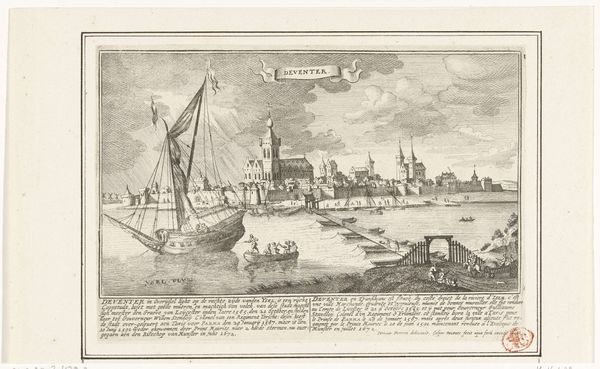
print, etching, engraving
#
dutch-golden-age
# print
#
etching
#
landscape
#
line
#
cityscape
#
genre-painting
#
engraving
#
realism
Dimensions: height 135 mm, width 237 mm
Copyright: Rijks Museum: Open Domain
Gaspar Bouttats made this print of Beverwijk in the late 17th century, using the intaglio process. Lines are incised into a metal plate, likely copper, with a tool called a burin. Ink is then applied to the entire plate and then wiped away, leaving ink only in the engraved lines. The plate is then pressed onto a sheet of paper, transferring the image. The stark contrast and precise lines give a clarity to the scene, showing the town's architecture, windmills, and bustling waterways. The mode of production is important: printmaking allowed for the wide distribution of images, contributing to a shared understanding of places and events. Consider the labor involved: the skilled hand of the engraver, the work of the printers, and the merchants who distributed the final product. This print is a reminder that even seemingly simple images are the result of complex social and economic networks. This challenges traditional notions of the artist as a solitary genius, instead highlighting the collaborative and industrial nature of art production.
Comments
No comments
Be the first to comment and join the conversation on the ultimate creative platform.
